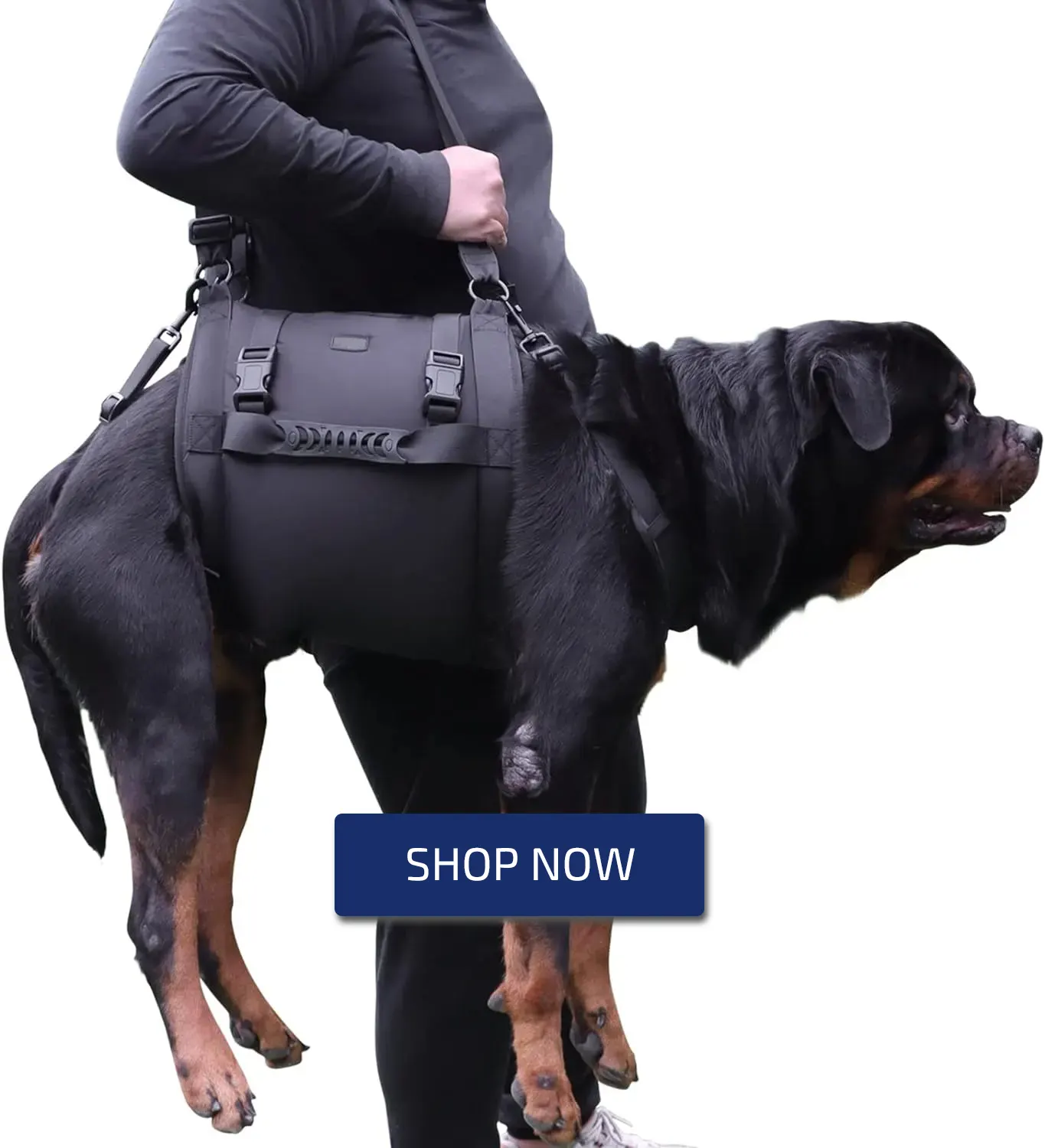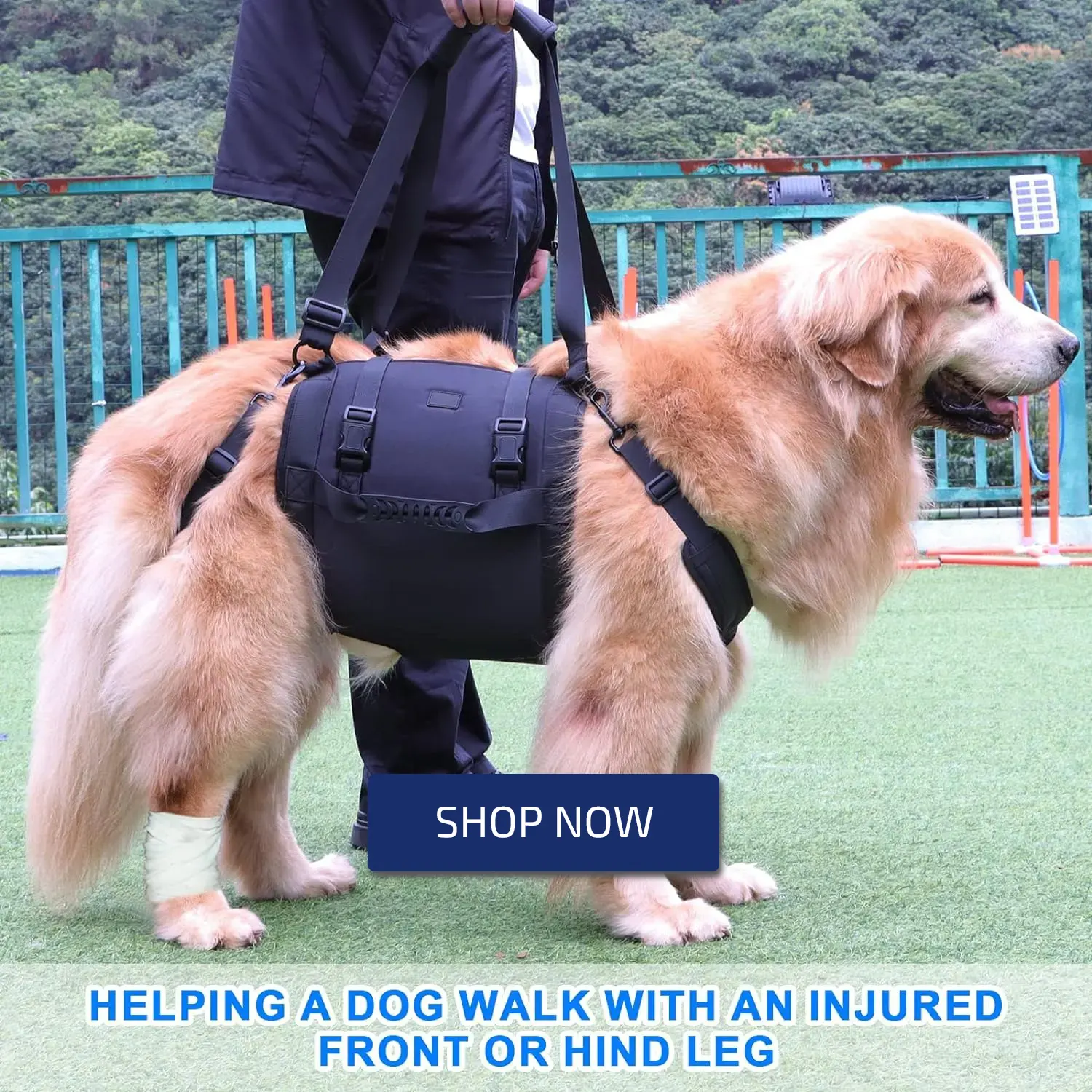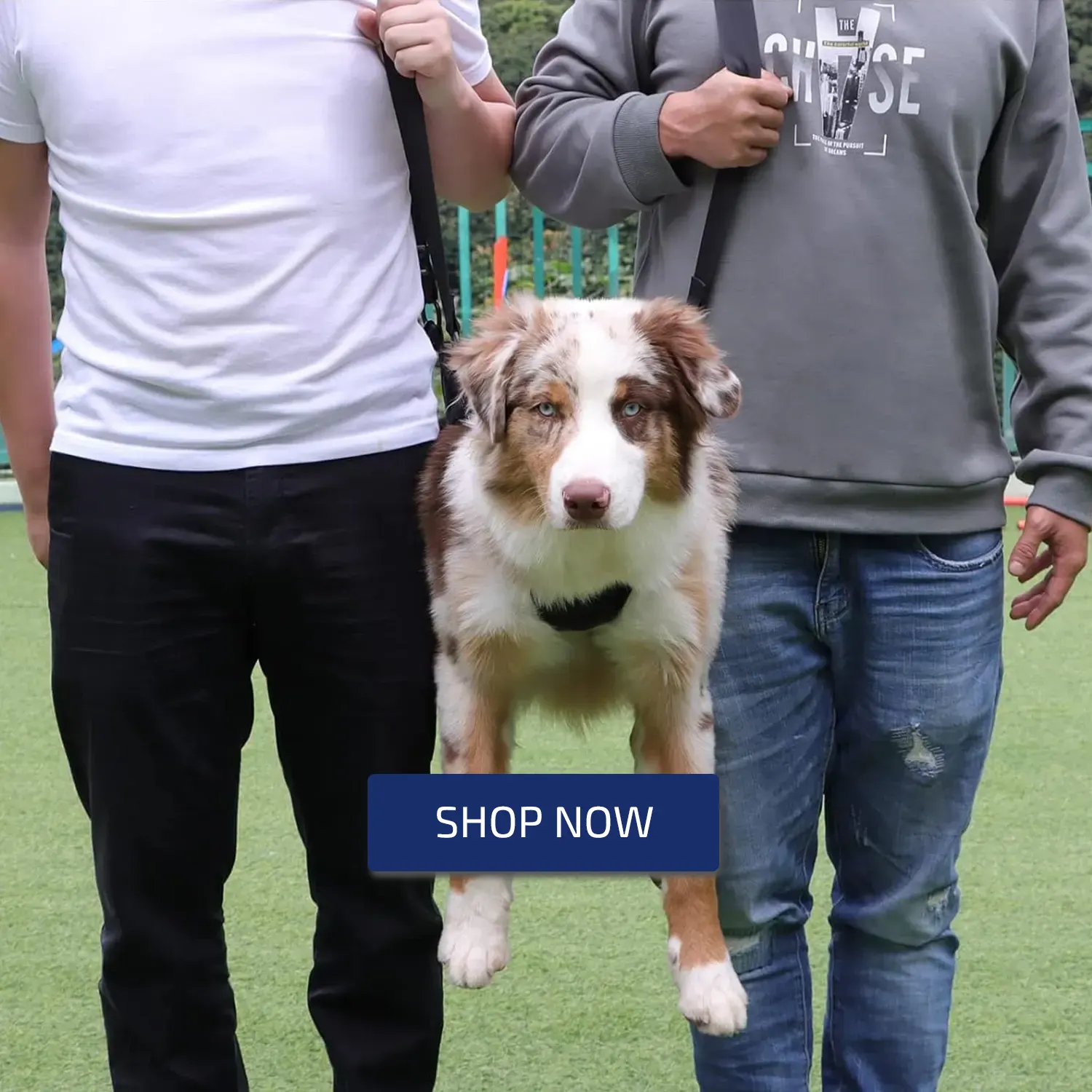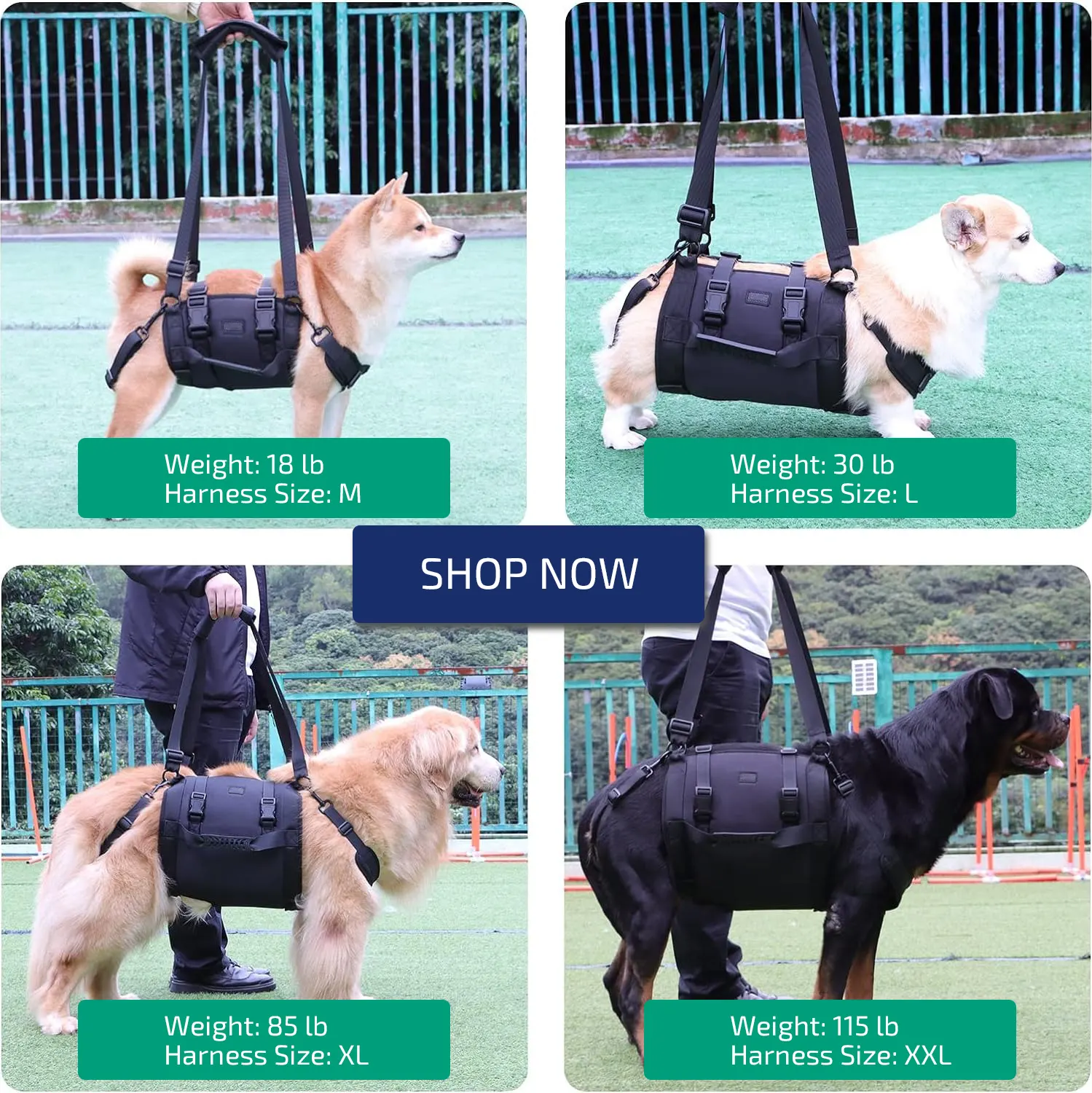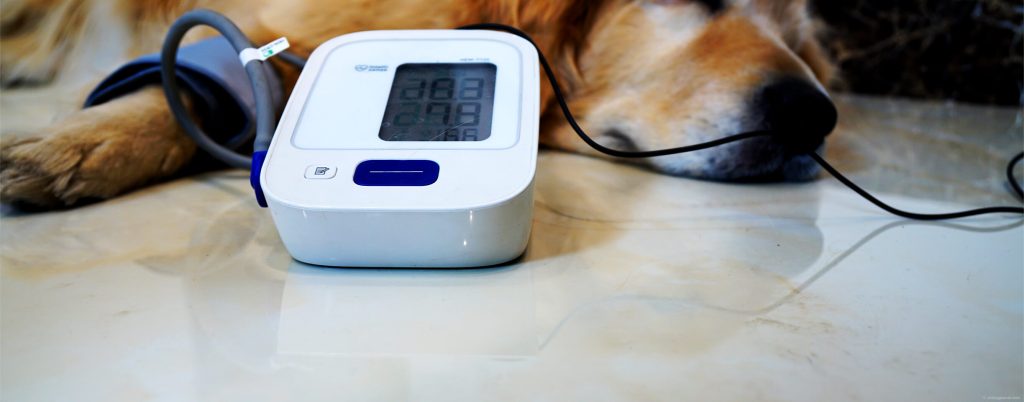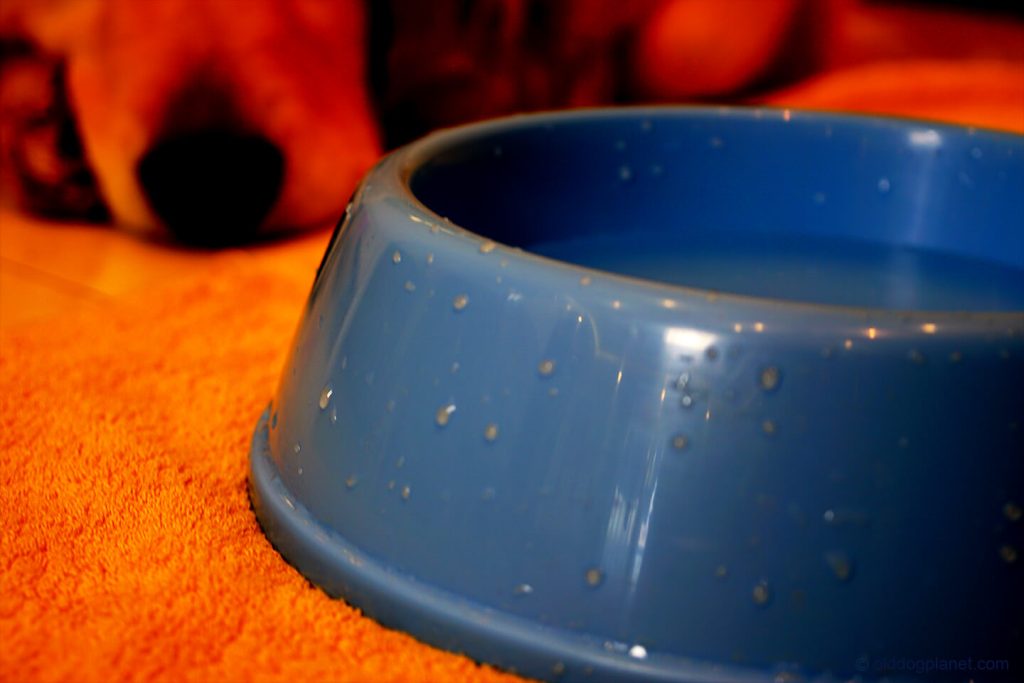It is rare for an old dog falls over when pooping. Simply put, this can be caused by one of two factors:
- The joints are unable to withstand the pressure of squatting, fail to maintain balance, and collapse.
- Nervous system lesions impair the dog’s ability to perceive and control body muscles in order to maintain a balanced posture.
Before diving into this topic, for those who want to find a solution as soon as possible to save his old dog from the pain of a poop fall rather than trying to figure out why, you can use a lifting harness to assist your old dog in finishing the defecation process smoothly if your old dog frequently falls while pooping, regardless of what causes him to fall.
This kind of product can directly assist the dog’s hind legs in sharing the pressure, and it is easily available on various shopping websites. You can also DIY a lifting harness for your old dog if you’re an artisan. Here’s a picture of the lifting harness:
Let’s take a look at the specific reasons why dog poop fell. Please follow me if you want to know what caused your dog to fall.
1. Joints are unable to withstand the pressure of squatting
The first case is when the dog’s hindlimb joints are unable to withstand the body weight when pooping. This is commonly associated with the following diseases and health issues:
- CHD (Congenital Hip Dysplasia).
- Back arthritis and arthritis.
- Overweight.
When standing on all fours, dog’s front legs support approximately 60% of its body weight, while its hind legs support approximately 40%. When a dog defecates in a squatting position, there is tremendous downward pressure on the joints of the hind legs, which bear about 85% of the body weight, which is equivalent to twice the weight carried by the hind legs when standing on all fours, while some breeds, such as Labrador and Golden Retrievers, will straighten their tails horizontally for balance when poop, which can put additional pressure on the hind legs.
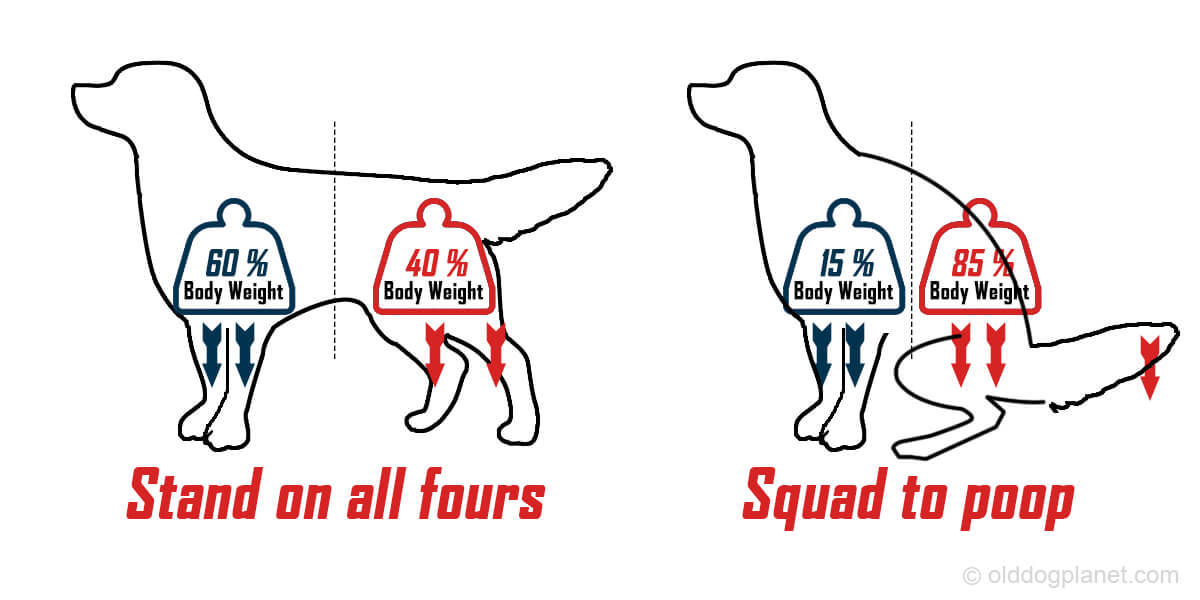
Fall caused by CHD
Standing and slow walking are already difficult tasks for old dogs with hip and leg joint diseases, especially for large breeds such as Labrador and Golden Retriever with a high incidence of CHD (congenital hip dysplasia), a genetic disease that accompanies large dogs with the disease gene from birth, wear and tear their hip joints more and more as they age.
CHD is generally a dysplasia of both hip joints at the same time, but there are differences in the development of the disease on both sides, resulting in a dog’s lower weight-bearing capacity on one hind limb than the other. Consider it as a seesaw. When the dog squatted down to poop, the leg on the side with severe CHD symptoms could not provide adequate support and was pressed lower. It is easy to lose balance and fall when the dog moves while pooping.
In fact, younger dogs are less likely to fall when pooping, even if they have CHD with varying degrees of symptoms bilaterally. This is because younger dogs have stronger muscles and a more flexible and sound nervous system than older dogs, making them strong enough to fight the imbalance caused by CHD.
Fall caused by Back Arthritis & Arthritis
Back arthritis and arthritis, in addition to CHD, are common degenerative conditions in older dogs. These chronic diseases often cause dogs to limp, fall on a run, whimper or cry in pain, and, like CHD, the development of arthritis often shows inconsistency of the bilateral limbs, so that the dog loses unilateral support and balance during the dynamic process of squatting and defecating, which is with twice the load when stand on all fours.
It is recommended that old dogs suspected of having joint disease see a vet as soon as possible to get a detailed diagnosis, check the etiology and degree of disease of the joint using X-rays and other equipment, and receive drugs or physical therapy.
Once your dog has begun systematic treatment at the vet, there are a few more things you can do to help protect her joints:
- Supplement your dog with high-quality omega3 fish oil
- The daily dosage of omega-3 (Total EPA & DHA) for dogs with osteoarthritis is 171mg/lb body weight (310mg/kg body weight)
- Illuminate the painful joint with an infrared light
- To avoid infrared burns to the eyes, prepare a pair of pet sunglasses or ski goggles that fit your dog’s face before irradiation.
- The irradiation process must be completed under the supervision of the dog owner, and the dog should not be placed under the infrared light device alone to prevent the dog from being burned or electrocuted by gnawing on the wire.
- Use a heat pack
When infrared light is unavailable, use heat pack, such as a salt pack, to apply heat to the dog’s painful joint. It should be noted that, unlike human bare skin, the hair on the dog’s skin can accumulate heat, and a heat pack placed on the joint for an extended period of time will cause the hair to continue accumulating heat until the dog can no longer bear the heat and jumps up in a panic. If you remove the heat pack at this point, the large amount of heat accumulated in the hair will continue to burn the skin, causing the dog’s skin to be burned by the heat in the next 10 seconds or so. Here are some tips for using heat packs for dogs:- Control the heating time of the heat pack, so that the temperature of the heat pack is slightly lower than the temperature when used for human.
- The heat pack should not stay in the same position for more than 30 seconds. It is recommended to move the heat pack every 30 seconds. Make sure that each movement does not overlap with the area covered last time.
- The entire process should be completed under the supervision of the dog owner.
- It is recommended to control the duration of the entire hot compress within 20 minutes.
Fall caused by Overweight
Arthritis is undoubtedly a major cause of falling on the poo, and if your elderly dog is also overweight, the situation will be exacerbated. Weight control for older dogs is an old and boring topic, and I only have one suggestion: feed your older dog AAFCO compliant high-quality weight-control dog food specified for age and breed, and strictly follow the feeding instructions., Do not give your dog any other food even if he is crying and begging. The following is a list of ideal body weight range for different dog breeds.
2. Falling while pooping due to neurological disorders
If your dog is acting weird in addition to falling while pooping, it could be due to a neurological disorder. Here are some typical symptoms of neurological disorders:
- Keep spinning.
- Hiding in a small space, being stuck and unable to get out.
- Knuckling. (Please refer to this blog post to learn more about knuckling)
- Involuntary shivering, when it’s not cold or there is nothing to fear.
- Not responding to the owner’s call, as if not knowing it was calling his name.
- Can’t sleep at night, wandering around.
- Bumping against walls, fences, doors, it looks as if the sense of space is lost.
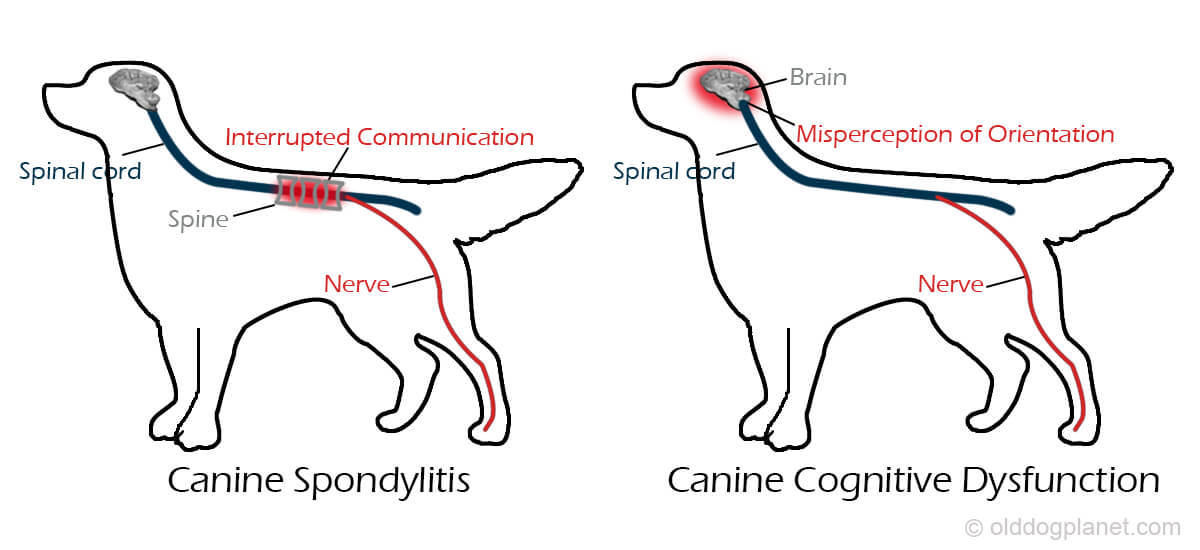
These symptoms are common signs of neurological diseases such as Canine Cognitive Dysfunction and Canine Spondylitis. If you notice your old dog exhibiting these weird symptoms, you should take him to the vet as soon as possible rather than wasting time guessing which disease he is suffering from. Unfortunately, there is no effective treatment for the neurological disease in dogs that can reverse the disease at the moment. Even the best vet can only relieve and postpone the disease’s progression with a limited number of drugs and surgery.
Until all of this happens, there are still a few things you can do for your old dog to keep their nervous system healthy:
- Feed fish oil rich in Omega-3, which has a certain protective effect on the nervous system of the dog.
- Feed AAFCO compliant high-quality dog food specified for age and breed. AAFCO has developed scientifically sound standards for the ingredient content of dog food that are based on extensive experimental data. AAFCO compliant dog food can provide your dog with complete essential nutrients, which will greatly reduce neurological damage and premature nervous system aging caused by the lack of some nutrients.


